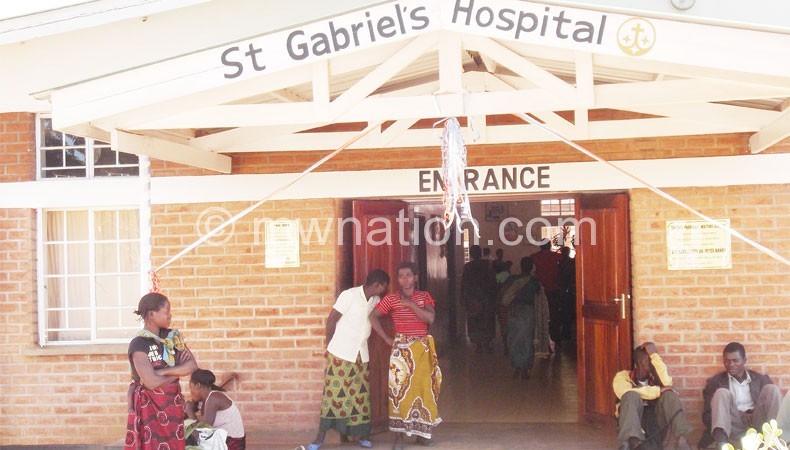Hospitals lead by example in sanitation

When 35-year-old Finale Chinyama went to St. Gabriel Hospital with her sick child last year, her worry was that her child would catch more diseases at the hospital.
Chinyama, of Silumbe Village, Traditional Authority (T/A) Kalolo in Lilongwe, says her fears were based on the fact that most hospitals are crowded and have poor sanitation, thereby spreading contagious and airborne diseases.
“One goes there with one disease, but sometimes they get infected by another disease, thereby making their condition worse,” Chinyama says.
However, once she set her feet at St. Gabriel Hospital, Chinyama is no longer worried about trips to the doctor.
Located at Namitete in Lilongwe, the hospital serves about 305 000 people from T/A Kalolo in Lilongwe and T/A Mavwere in Mchinji.
“The hospital and its surroundings are very clean. This assures me that I together with my sick child will not catch other diseases,” says Chinyama.
No wonder the hospital is one of the health facilities that have been recently awarded by the Ministry of Health for cleanliness. The facilities scored 92 percent for good sanitation, qualifying it as a centre of excellence in infection prevention and control.
The Ministry of Health, in partnership with Jphiego with funding from USaid, began implementing Performance and Quality Improvement in Infection Prevention and Control practices in 2002.
Following an improvement in sanitation, St. Gabriel Hospital has seen a decline in newborn sepsis from 30 percent in May 2013 to zero in March 2014. Neonatal deaths have dropped from 60 percent in May 2013 to 33 percent in February 2014. While maternal deaths dropped from 40 percent in July 2013 to zero in February 2014.
Principal secretary in the Ministry of Health Chris Kang’ombe says the programme started with the aim of encouraging hospitals to prioritise sanitation because it helps prevent the spread of diseases.
“Since the programme started, it has created competition among hospitals to do well in sanitation. The hospitals now work hard to ensure that their facilities are cleaner than others. This is working to the advantage of patients and others who visit these hospitals because they do not catch diseases,” said Kang’ombe.
There are four steps that a hospital needs to go through to get the award: setting performance standards, implementing the standards, measuring progress and rewarding achievement.
Kang’ombe said the cleanliness in hospitals has motivated people in surrounding villages who visit such clean health facilities to practise good sanitation in their homes.
Chinyama is one of the villagers who have emulated the good sanitation from St. Gabriel Hospital. She says previously, her home was always dirty and this was the main cause of diseases such as diarrhoea in her home.
She says her four children are living healthy lives because of the improved sanitation in her household.
St. Gabriel Hospital’s principal administrator, Mathews Mataya, says the secret behind his hospital’s success in sanitation is teamwork.
“This story of success can be attributed to team work. I tell all staff members to take the responsibility to improve cleanliness,” says Mataya.
Kang’ombe urged hospitals which have not yet started taking additional efforts to improve sanitation to start it now.
“We have over 700 hospitals across the country. If they all put sanitation as a priority, our hospitals would be a place for healing only and not contracting diseases,” says Kang’ombe.
Nkhoma Mission Hospital is another successful hospital in sanitation. The hospital scooped 93 percent as a centre of excellence in infection prevention and control.
The hospital’s principal administrator, Brenda Chalanda-Gondwe, says the sanitation at the hospital has also changed lives of many households in surrounding communities.
“The good sanitation at our hospital is mutely teaching the surrounding communities to practise good sanitation in their households. Infection cases at the hospital and surrounding communities are now decreasing,” says Chalanda-Gondwe.
Like Mataya, Chalanda-Gondwe attributed her hospital’s success to teamwork: “We work as a team and we take this hospital like our own homes.”
Since the awards programme started a few years ago, the Ministry of Health has awarded 20 hospitals as centres of excellence in infection prevention and control practices and four hospitals as centres of excellence in reproductive health.




